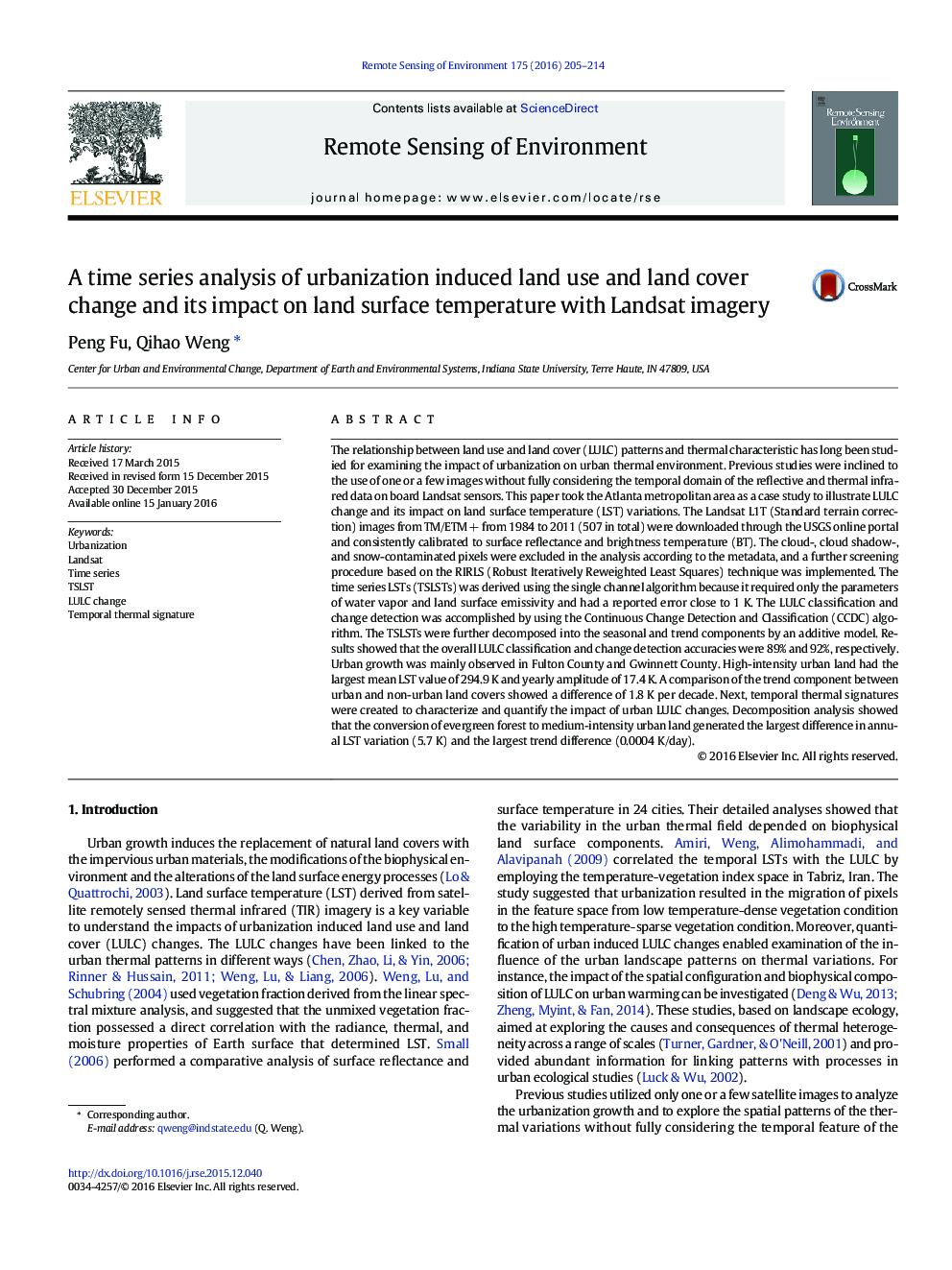| کد مقاله | کد نشریه | سال انتشار | مقاله انگلیسی | نسخه تمام متن |
|---|---|---|---|---|
| 6345621 | 1621225 | 2016 | 10 صفحه PDF | دانلود رایگان |
- A time series analysis of the impact of urban LULC changes on thermal patterns
- Time series LSTs were decomposed into stationary segments for analysis.
- Surface reflectance, brightness temperature, and NDVI for classification/detection
- Thermal temporal signatures were created to characterize urbanization impact.
The relationship between land use and land cover (LULC) patterns and thermal characteristic has long been studied for examining the impact of urbanization on urban thermal environment. Previous studies were inclined to the use of one or a few images without fully considering the temporal domain of the reflective and thermal infrared data on board Landsat sensors. This paper took the Atlanta metropolitan area as a case study to illustrate LULC change and its impact on land surface temperature (LST) variations. The Landsat L1T (Standard terrain correction) images from TM/ETMÂ + from 1984 to 2011 (507 in total) were downloaded through the USGS online portal and consistently calibrated to surface reflectance and brightness temperature (BT). The cloud-, cloud shadow-, and snow-contaminated pixels were excluded in the analysis according to the metadata, and a further screening procedure based on the RIRLS (Robust Iteratively Reweighted Least Squares) technique was implemented. The time series LSTs (TSLSTs) was derived using the single channel algorithm because it required only the parameters of water vapor and land surface emissivity and had a reported error close to 1Â K. The LULC classification and change detection was accomplished by using the Continuous Change Detection and Classification (CCDC) algorithm. The TSLSTs were further decomposed into the seasonal and trend components by an additive model. Results showed that the overall LULC classification and change detection accuracies were 89% and 92%, respectively. Urban growth was mainly observed in Fulton County and Gwinnett County. High-intensity urban land had the largest mean LST value of 294.9Â K and yearly amplitude of 17.4Â K. A comparison of the trend component between urban and non-urban land covers showed a difference of 1.8Â K per decade. Next, temporal thermal signatures were created to characterize and quantify the impact of urban LULC changes. Decomposition analysis showed that the conversion of evergreen forest to medium-intensity urban land generated the largest difference in annual LST variation (5.7Â K) and the largest trend difference (0.0004Â K/day).
Journal: Remote Sensing of Environment - Volume 175, 15 March 2016, Pages 205-214
